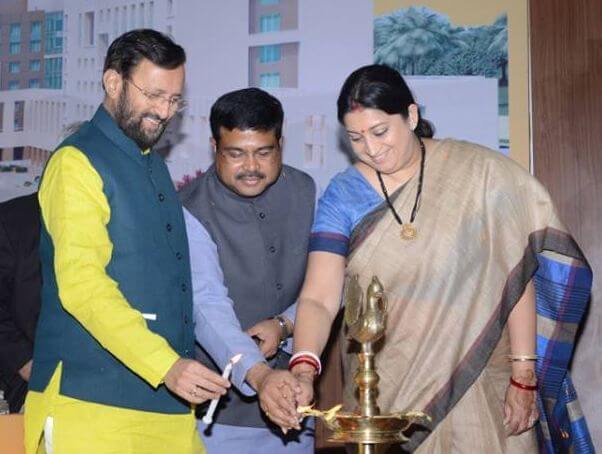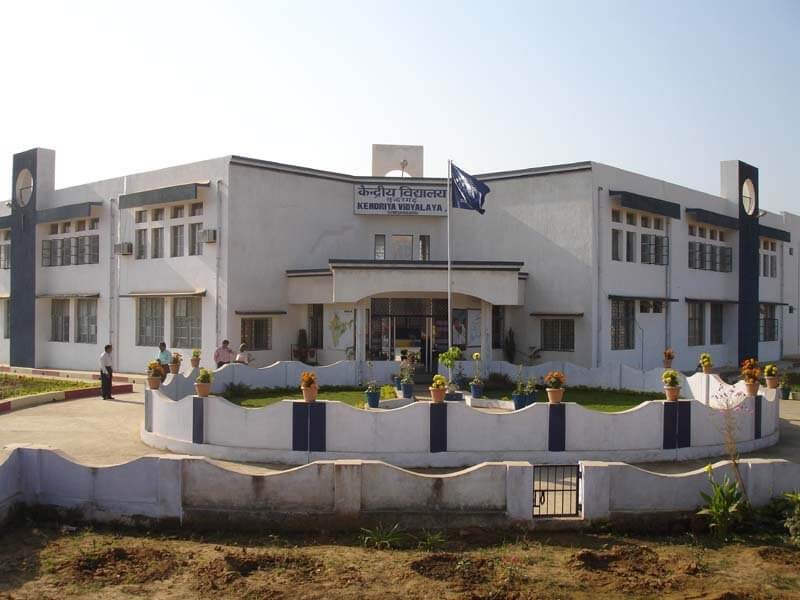Researched and Written by Aarathi Ganesan
Last week, Minister for Human Resource Development (HRD) Prakash Javadekar, along with his predecessor Smriti Irani, came under the public scanner for alleged exploitation of ministerial reservations in Kendriya Vidyalayas across the country. Although this issue has been reported on for approximately a decade, this time around public discourse on the allegations has reached a zenith.
Ensuring Equity
Kendriya Vidyalayas (KVs) are recognized nation-wide as one of the last bastions of quality public education. The schools cater to the children of government employees, across a wide spectrum of cadres, sectors, and institutions. The Kendriya Vidyalaya Sangathan (KVS) is the autonomous body that supervises the schools and is lead by the HRD Minister. As central institutions, KVs have employed stringent reservation policies, accommodating for children from scheduled castes and tribes, the differently abled, children of fallen armed forces personnel, and girls. Since their inception, the schools have increasingly accommodated for a wide variety of social groups, making them far more equitable and diverse than most.
KVs, with their subsidized education and higher economic standards, emerge as the most capable institutions to impart a well-rounded education to India’s poor. The demand to study at the institutions, given their track records of excellent competitive examination scores, is extremely high amongst India’s masses. Keeping this in mind a quota was instituted in 1975, wherein the HRD Minister was given the power to admit 100 students of her/his own discretion to KVs across the country. These admissions would be sent to the HRD ministry and approved later by the KVS. Ministers of Parliament (MPs) were also offered this quota which allowed them to recommend admissions from their own constituencies. However, these quotas have been increased over the years, blatantly exceeding their limits and favouring students with political connections, while failing to serve those who actually require them.
A Controversial Past
The discretionary quota for MPs and the Minister of HRD has had a troubled past. In 1994, members of the Kendriya Vidyalaya Employees’ Association (KVEA) petitioned against the quota, citing the questionable validity of the candidates themselves. As the petition reached the judiciary, it was discarded, although the petitioners were granted the rights to approach the issue in the future, whenever they saw fit. Therefore, the scheme continued and in 1995, discretionary admissions rose to as high as 15,000. All the while, the quota itself was heavily criticized for burdening the education system, diluting the quality of education at large, skewing teacher-pupil ratios, and encouraging nepotism.
The petition was reintroduced in July of 1998 by Murli Manohar Joshi, the HRD minister during the NDA rule. Joshi, aided by BJP veteran Uma Bharti, had recommended 1,700 admissions, well over their now prescribed limit of 1,000. The KVS admitted 730 of these applications. This repackaged scheme relaxed the criteria for recommendation heavily, drawing the ire of KVEA again, alongside the Centre for Public Litigation. The same year, their petition was submitted to the Delhi High Court that quashed the quota in its entirety, citing the violation of Article 14 of the Constitution, that mandates equal access and opportunity for all Indian citizens. The judges recognized the laxity of definitions and remarked that such schemes opened themselves for misuse, supporting the vested interests of parties that did not fall under the purview of KVs.
Arjun Singh was the next appointed HRD minister when the UPA came to power in 2004. Singh reintroduced the scheme and raised his discretionary quota to 1,200. However, unlike his predecessor, Singh maintained more stringent selection criteria, that accounted for different kinds of ‘representation’ in KVs. When Kapil Sibal was poised to take over the post in 2009, Singh made hurried appointments and recommendations to KVs fairly early in the academic year, instead of leaving the task to Sibal himself. Nevertheless, there is little available evidence to suggest that Singh satisfied the original ethos of the quota, or explicitly abused it either, given that he only recommended 1,000 applications out of his possible 1,200 that year.
In 2010-2011, Sibal moved to scrap the quota altogether, and reformed admissions to KVs at large. Citing that the quota was a violation of the newly passed Right to Education Act (RTE) of 2010, Sibal advocated for complete transparency in the admissions process, to ward off the quiet admissions of the children of powerful private individuals. In order to facilitate this, Sibal limited MPs’ quota to two each. Priority was given to the education and admission of the children of transferable government individuals. After their seats were accounted for, private individuals could apply for the remaining seats through a free and fair admission process.
However, MPs across India’s political spectrum including the INC protested vociferously against this move. As individual MPs received hundreds of such applications, choosing two would be an impossibly difficult task and could anger remaining applicants (who also doubled as constituents). Therefore, Sibal, under incredible political pressure, was forced to reinstate the quota within the next few months, and additionally raised MPs’ individual quota from two to six. However, until the end of his tenure in 2012, Sibal officially relinquished his discretionary quota. His successor Pallam Raju did recommend admissions to KVs, although within prescribed limits.
The Current Controversy
With the available data, we can see that although these quotas were abused at times, they have seemingly not exceeded their limits drastically post 1995.This changed to an extent in 2014, when Smriti Irani was appointed as the Minister of HRD in the new BJP government. Within a year, Irani had swiftly increased the MPs discretionary quota to ten children, which was approved by the KVS, which she chaired. Citing that the move was a result of aforementioned concerns over frustrated constituents, this move would reserve close to 8,000 KV seats alone! Irani also moved to increase the Minister of HRD’s quota to 1,500 (however, the official minister’s limit stands at 450 as of now).
Irani’s own discretionary recommendations steadily grew, rivalling figures from 1995. Irani recommended over 5,000 students for admissions to KVs in 2015-2016, grossly exceeding her allotted quota of 450. From 2016-2017, the number rose to an exponential 15,065 recommendations. The KVS was admitted 3,500 of these applications in the first instance, and in the second, admitted over 8,000.

Although a respected leader within party ranks, Javadekar too succumbed to the appeal of the discretionary quota. Greatly exceeding the quota, Javadekar recommended a mammoth 15,492 admissions this academic year. Like Irani, over 8,000 of these are likely to be accepted by the KVS for admission.
Therefore, at a glance, it is difficult to discern the extent of political manipulation and nepotism in this case. Looking at the numbers it is highly likely that many children gained admission through connections. However, if public rhetoric is anything to go by, both Irani and Javadekar have maintained their commitment to making education in India as accessible as they can, because they have entertained multiple requests.
Irani has faced these allegations by Anubhuti Bishnoi, the same journalist who broke the story last week, since 2015. In past displays of parliamentary theatrical prowess, Irani has justified her actions as ‘pro-poor’, and ‘pro-education’. In 2017, Javadekar also urged MPs to fulfil their discretionary quota, so as to incrementally improve educational access, as well as satisfy constituents’ demands. The ministry has also been considering reservations within MP’s quotas based on income, for children from weaker socio-economic circumstances.
A Case of State-Sponsored Nepotism?
KVs are aspirational destinations for several sections of Indian society. As the institution employs implicit gatekeeping mechanisms, it can be difficult for those in need of affordable education to access them. Therefore, when isolated, these discretionary recommendations could be seen in a positive light. However, fielding so many requests and ensuring the acceptance of a good majority of them severely challenges this logic. As mentioned earlier, it is impossible to distinguish between meritorious students and those who bear unprecedented privilege. Therefore, this en masse admission ends up disproportionately burdening KVs across the country, which already admits 1.5 lakh children on an annual basis.
An argument could be made in the government’s favour in light of this, in that recent HRD proposals (2017) have confirmed the opening of 50 new KVs across the country, alongside the opening up of teaching and administrative jobs. Once implemented, they will service 50,000 additional students, and furnish 6,000 possible individuals with coveted government employment. However, these plans are rooted in the future – the implications of such reservations are felt in the present; they have decisive impacts on the quality of education provided at KVs, today.
The demand for gaining admission into KVs is almost ludicrously high. In 2016, an online admissions process was tested for the first time. For New Delhi KVs, over 1 lakh applications were received, for a mere 8,760 seats. Besides quotas disbursed by the Minister of HRD and MPs, the only other way to gain admission would be through gendered quotas or the RTE. Therefore, a fundamental lack of accessible and affordable quality public education coerces dependence on these dubious systems, reinforcing their necessity in the eyes of many.
A consistent failure to provide services in line with its stance of a socialist welfare state has coerced structural corruption and made light of institutions such as the RTE.
Abstinence from the quota is required, premised on the ideals that the Delhi High Court upheld nearly two decades ago. Alternatively, if proposals for MP’s recommendations as proposed by Javadekar’s ministry are implemented across the two quota systems, then potential wrongdoing could be further mitigated.
Meritocracy with respect to educational access is an ideal to aspire to – it can only be achieved when every member of society is on a level playing field. Therefore, measures that protect communities that do not enjoy social privileges, and improve their social circumstances are an imperative process in this goal. If this government is true to its commitment towards national ideals of equality (and directive principles), it needs to stick through with the mentioned recommendations and improve public services beyond well-designed policy documents and campaign promises.






